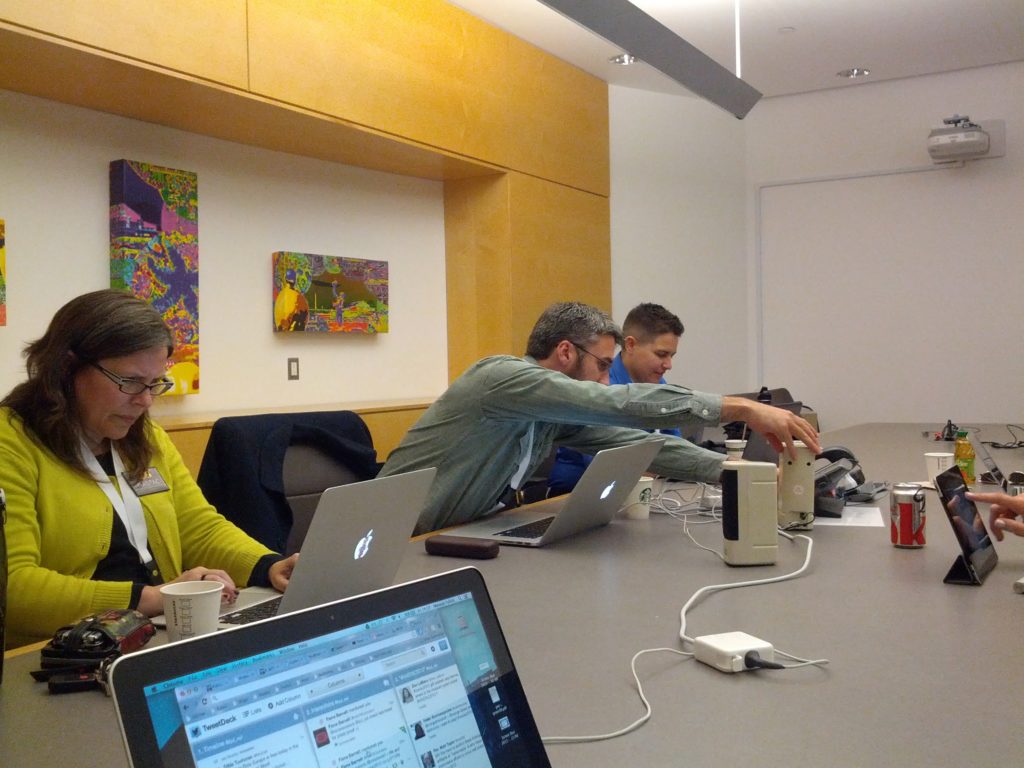This was a follow-up post that I wrote (published on October 21, 2011) after a briefer article of mine on academic blogging was published in University Affairs. I wanted to get into some more of the reasons why blogging is still considered a lesser form of communication, and therefore isn’t something that usually contributes to building an academic career. Here is a link to the original post from October 21, 2011: More than a storm in a teacup – the debate on academic blogging.
Last week an article I wrote about academic blogging was published in the print and online editions of University Affairs. I decided to provide a follow-up to the article, because there were so many interesting comments from bloggers that couldn’t be included in the scope of the original post.
I also want to take time to link their points to those from another discussion over at The Guardian, involving the critique of academic publishing and the call for its reform. Many of the issues mentioned by bloggers were clearly entwined with this recent thread of criticism that targets academic journals and their business model, one that is described by its current critics as restrictive, exploitative and out-dated.
A benefit of blogging cited by most of those who commented was the development of a public profile independent of the regular channels of academic validation. This visibility tended to lead to more (and diverse) opportunities because of exposure to different audiences. Having a public “face” meant being recognizable as an expert on a particular topic, and PhD student Chris Parsons (UVic) explained that “this is important for graduate students, in particular, given that most of us lack established publishing records.” Because of his active construction of a body of “alternative” online work, Parsons has been invited to contribute to more traditional peer-reviewed publications, the accepted signifiers of academic success.
The bloggers also described using social media for professional networking and collaboration. Blogging sparked dialogues and exchanges across disciplines, facilitated by what David Phipps (of York University) describes as “enhanced reach and two-way communication,” enabling new connections that were unexpected, serendipitous, and productive. Blogs were also viewed by students as more inviting and accessible than traditional publications; UVic professor Janni Aragon discussed how students have become engaged with her online work, many of them reading and responding to her posts.
A related theme was that of the benefit of gaining access to different audiences. Academic publications are associated with specialized audiences confined not only to the academic realm but also to disciplinary areas. Professor Marie-Claire Shanahan (U of Alberta) discussed how blogging has helped her to build a research community, allowing her to “meet people with similar interests who work in different areas” and also to reach out to audiences for whom the research is relevant but who don’t normally have access to it. All the bloggers who sent me comments made mention of this relationship between development of a public profile, and the ways in which “blogging extends our ability to communicate our research beyond academic circles in an accessible and timely manner” (Alfred Hermida, UBC).
Several bloggers expressed their frustration with traditional academic publishing, including complaints that the regular publication process takes too long and that the resulting publications are inaccessible to non-academic audiences. Sharing ideas through accessible online sources is more efficient because it isn’t hindered by the gatekeeping function of peer review (part of what validates academic knowledge). Chris Parsons described how his work has been cited in “government filings, academic papers, news sites, and so forth […] none of that would have happened if I was constrained to the slow process of peer-review or forced to utilize traditional media outlets.”
The publishing model that currently dominates renders research inaccessible to the publiceven though much of the research done in universities is publicly funded, and the journals technically acquire their content for free. Parsons argues that his work “is publicly funded, so it should be available to the public” and blogging is a part of this. The current model reflectsthe concept of knowledge as a “private good” rather than a “public good” (Slaughter & Rhoades, 2004, p.28). A private-good model goes against an ethic and practice of sharing as discussed by PhD student Rebecca Hogue who explained, “I like to get my ideas out there, and by sharing them (and writing them down) they become more solid […] I hate to hold stuff back because someday it might be published.” In spite of the myth of the lone scholar, collaboration has been an essential feature of academe in the past. How does an increasingly proprietary, private model of knowledge affect collegial work?
Those academics involved in blogging are engaging with new modes of communication and new models of scholarly collaboration and research dissemination. The vehemency with which this practice is debated by bloggers and non-bloggers alike speaks to the deep roots of the issue; because academic publishing is key to professional advancement in academe, everyone has something at stake. This debate touches on the heart of the university’s mission, and what accompanies it — a continued struggle over the definition of authoritative knowledge.


